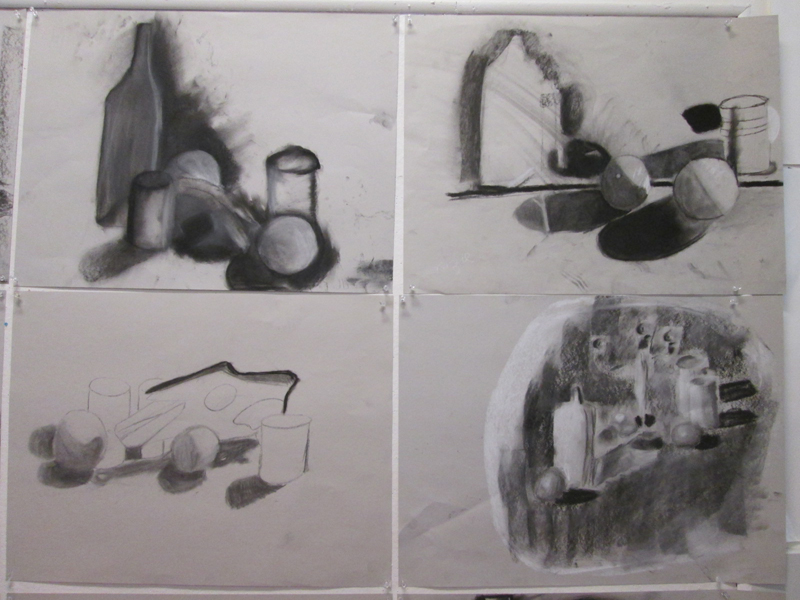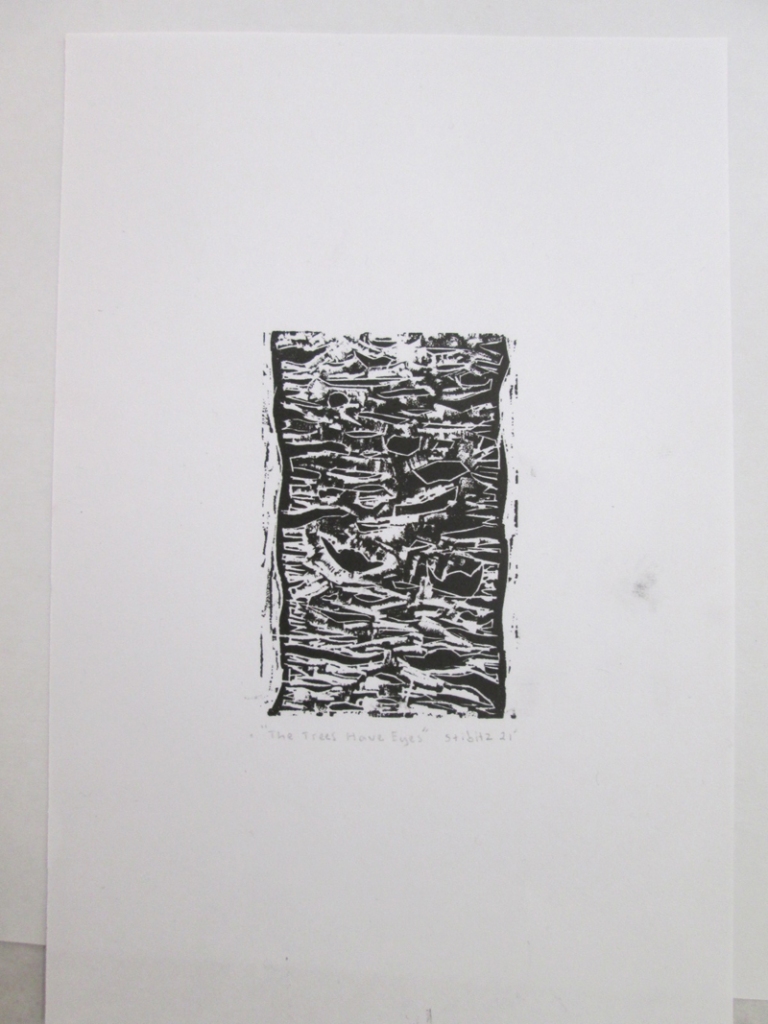This slideshow requires JavaScript.
Over spring break I did a workshop for the Artspaces program of the Sitka Fine Arts Camp and the Sitka Artists’ Coop on painting still life in tempera paint, using overlap, shading, highlights, and perspective to make it look 3-dimensional.
We did this in two two-and-a-half-hour-long sessions. It was a bit long for some of the kids, but they all hung in there, worked hard and got a little beyond their skills they had coming in. It was aimed at kids in grades 4-6. Some of the kids were in second grade, and one was in 8th, but they all had solid skills, and most importantly, confidence.
We set up still life objects on drapes down the center of two tables: fruit and vegetables (I bought a couple of paper bags of overripe veggies at the downtown grocery store), an imitation rooster and sombrero from the Fine Arts Camp, a teapot, toy guitar, some plush toys, and a couple of bottles.
First showed kids slides of Cezanne and Matisse still lifes, for inspiration and for a mini lesson on Modern Art.
Then had them paint a still life they set up, with some objects overlapping others, and had them mix colors. Once they got their big shapes in, had them add shading, cast shadows, and highlights.
Part of the lesson was color complements, the way you can make a color “pop out” by putting its opposite next to it. I pointed that out in the slides, and helped the kids figure out what might make a good background color for an object.
Kids wanted to put their still life objects into a landscape, so second day showed them about the horizon line, and viewpoint: how having the ground or horizon at the bottom of the page, the way most kids start out, indicates the viewpoint, your eye level, even with the ground (or table), which is not a common way to look at things.
I made sketches to show how moving the horizon changes how we read the viewpoint. Horizon high on the paper = high viewpoint, like from a plane or mountain top. It’s not something you can really explain, but I think this made a big difference in the kids’ artwork, that understanding that you can see the ground, or table, under your objects; that in a picture, the ground actually comes up the page.
The second and last session had them start out with just black and white, mixing five grays. I had to help them with that so they’d mix enough. Kids (all of us) are often too lazy to mix enough of a color for our picture.
This is a challenging exercise but very good for stretching the brain. And, the product looks very “advanced.”
We had red, yellow, blue and white tempera paint on paper plate palettes. Most used a second plate for mixing more colors. Each kid had a container of water and folded paper towels for blotting the brush.
This year I have been working with (playing with) entire classes of first and second graders, with the aim of enjoying and looking at great art, and enjoying creating their own, making a safe space for them to try things and not be “wrong.” So it was fun to do something different, and help kids who already have some confidence to work on their technical skills.
And finally, photo of the ratatouille (came out pretty good – used this recipe, with some variation: http://www.epicurious.com/recipes/food/views/Ratatouille-with-Penne-102256 ) made with the pretty, if over ripe, peppers, eggplant and tomatoes we painted.

Read Full Post »


















































































































































































































































